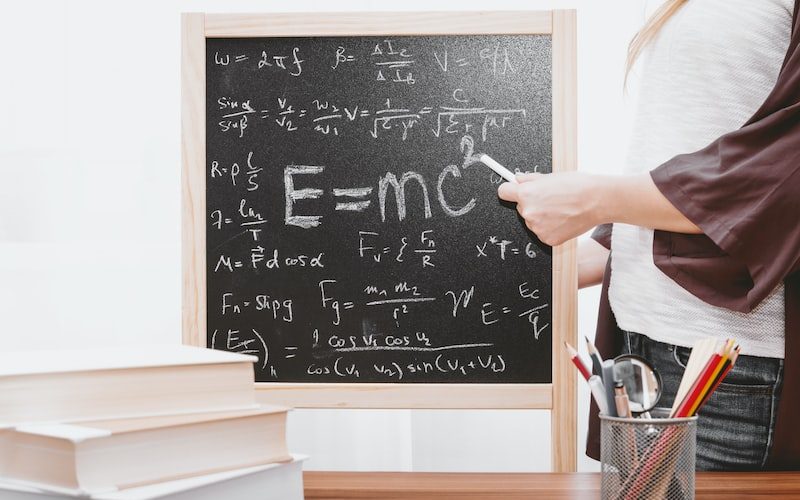Kochen-Specker teoremi, kuantum mekaniği alanında heyecan verici bir keşiftir. Bu teorem, kuantum sistemlerinin belirsizliklerini ve bağlantılarını açıklamaya çalışırken ortaya çıkan zorlukları ele alır. İsmi, Simon Kochen ve Ernst Specker adlı matematikçilerden gelir, çünkü 1967 yılında bu teoremi ilk defa tanımlamışlardır.
Bu teorem, her boyutlu kuantum sisteminde bazı özel durumların paralel olarak ölçülmesinin mümkün olmadığını ortaya koyar. Yani, kuantum mecralarında aynı anda birden fazla özelliği kesin bir şekilde ölçmek imkansızdır. Bu sonucun ardında yer alan fikirler oldukça karmaşıktır, ancak anahtar nokta, klasik fizikteki deterministik görüşle kuantum mekaniğinin temsil ettiği olasılıkların ayrışmasıdır.
Kochen-Specker teoremi, kuantum teorisindeki belirsizlik ilkesini daha iyi anlamamızı sağlar. Bu teorem, doğrusal olmayan ölçüm sonuçlarıyla birlikte gelen bağlantıların varlığını vurgular. Bu bağlantılar, parçacıklar arasında anlamlı ilişkiler olduğunu gösterir ve belirli özelliklerin birbirine bağlı olduğunu ortaya koyar.
Bu teoremdeki en büyük sürprizlerden biri, klasik mantığın kuantum dünyasında tam olarak geçerli olmadığı gerçeğidir. Kochen-Specker teoremi, sistemlerin içsel tutarsızlıklarını ve çelişkilerini açıkça ortaya koyar. Bunun anlamı, kuantum dünyasının bize alışık olduğumuzdan farklı bir şekilde davrandığıdır. Belirsizlikler, süperpozisyonlar ve kuantum etkileşimleri gibi kavramlar, klasik fizikten tamamen farklı olan ilginç bir gerçekliği yansıtır.
Kochen-Specker teoremi kuantum mekaniğindeki şaşırtıcı zorlukları aydınlatan önemli bir ilerlemedir. Kuantum dünyasının gizemlerini çözerken, bu teorem bize belirsizliklerin ve bağlantıların karmaşıklığını gösterir. Kochen-Specker teoreminin keşfi, kuantum mekaniği alanında derin bir anlayış elde etmek için yapılan çalışmaların bir parçasıdır ve gelecekteki araştırmalara ışık tutacak önemli bir adımdır.
Quantum Mystery Unraveled: Exploring the Kochen-Specker Theorem
Have you ever wondered about the mind-boggling concepts of quantum physics? Prepare to delve into the depths of a fascinating enigma as we unravel the Quantum Mystery behind the Kochen-Specker Theorem. This thought-provoking theorem challenges our understanding of reality and sheds light on the peculiar behavior of quantum systems.
At its core, the Kochen-Specker Theorem addresses the concept of non-contextuality in quantum mechanics. In simpler terms, it questions whether the properties of a quantum object exist independently of our observation or measurement. This notion strikes at the heart of classical intuitions, where we assume that objects possess well-defined properties regardless of our interaction with them.
Imagine a scenario where you measure different properties of a particle, such as its position or spin, along various directions. Surprisingly, the Kochen-Specker Theorem reveals that assigning definite values to these properties becomes impossible without violating certain mathematical constraints. In other words, the properties of a particle cannot be determined in a way that remains consistent across all possible measurements.
To comprehend this mind-bending concept, let’s consider an analogy. Picture a chameleon in its natural habitat, blending seamlessly with its surroundings by changing colors. Similarly, quantum systems exhibit an elusive nature, “changing colors” when subjected to different measurements. Just as the chameleon’s appearance is context-dependent, so are the properties of quantum objects.
The implications of the Kochen-Specker Theorem extend beyond theoretical curiosity. Its findings challenge the fundamental assumptions underlying classical physics and have practical applications in fields like quantum computing and cryptography. By grasping the intricacies of non-contextuality, scientists aim to harness these phenomena for technological advancements that were once unimaginable.
Unlocking the Secrets of Quantum Reality: Kochen-Specker Theorem Demystified
Quantum physics has long fascinated scientists and philosophers alike, providing a glimpse into the mysterious workings of our universe at the smallest scales. Among the intriguing concepts in this field is the Kochen-Specker theorem, which sheds light on the fundamental nature of quantum reality. In this article, we will delve into the intricacies of this theorem and unravel its secrets.
At its core, the Kochen-Specker theorem challenges the notion of “hidden variables,” which suggests that there might be underlying properties determining the outcomes of quantum measurements. Proposed by mathematicians Simon B. Kochen and Ernst Specker in the 1960s, this theorem asserts that it is impossible to assign definite values to all physical quantities simultaneously in a consistent manner within the framework of quantum mechanics.
To understand the essence of the Kochen-Specker theorem, one must first grasp the concept of non-contextuality. This principle states that the outcome of a measurement should not depend on other compatible measurements performed simultaneously. However, the theorem demonstrates that in the context of quantum systems composed of three or more dimensions, such non-contextual assignments are logically inconsistent.
The implications of the Kochen-Specker theorem go beyond theoretical arguments; they challenge our intuitive understanding of reality. It suggests that the nature of quantum particles is inherently contextual, and their behavior cannot be fully explained by classical concepts. This theorem offers key insights into the foundational principles of quantum mechanics and highlights the need for alternative approaches to comprehend the nature of reality at the quantum level.
In recent years, experimental tests of the Kochen-Specker theorem have been conducted, further confirming its validity. These experiments involve complex setups and utilize advanced techniques to observe the violation of non-contextuality predictions in line with quantum mechanics. By examining the departure from classical expectations, researchers continue to unlock the secrets of quantum reality and deepen our understanding of the fundamental building blocks of the universe.
Challenging the Foundations of Quantum Mechanics: Kochen-Specker Theorem in Focus
Kochen-Specker Teoremi, kuantum mekaniğinin temellerine meydan okuyan önemli bir konudur. Bu makalede, Kochen-Specker Teoremi’nin ne olduğunu ve kuantum mekaniği üzerindeki etkilerini inceleyeceğiz.
Kochen-Specker Teoremi, 1967 yılında Simon Kochen ve Ernst Specker tarafından ortaya atılmıştır. Bu teorem, klasik mantık kurallarının kuantum sistemlerinde tam olarak geçerli olmadığını gösterir. Kısacası, belirli bir özelliği ölçmek için yapılan deneyler sonucunda, bu özelliği aynı anda kesin bir değere sahip olmamasına rağmen, her parçacığın kesin bir değere sahip olduğunu varsaymak mümkün değildir.
Kochen-Specker Teoremi’nin temelinde, kuantum parçacıklarının özelliklerini tanımlamak için kullanılan ölçüm cihazlarının doğasındaki sınırlamalar yer alır. Klasik mantıkta olduğu gibi, kuantum sistemleri için de “mutlak doğruluk” veya “kesin değer” kavramları geçerli değildir. Parçacıkların durumu, bir özelliği ölçmeden önce belirsizlik içinde bulunur ve ölçüm yapıldığında net bir değer ortaya çıkar.
Kochen-Specker Teoremi, kuantum mekaniğinin temel prensiplerini sorgulamakta ve farklı bir yaklaşım gerektiğini ima etmektedir. Bu teorem, “gizli değişken” modellerini reddeder ve kuantum mekaniğinin öngördüğü belirsizlik ve bağımlılık prensiplerinin önemini vurgular.
Kochen-Specker Teoremi’nin sonuçları, kuantum mekaniği üzerindeki tartışmaları ve araştırmaları şekillendirmiştir. Bu teorem, kuantum bilgisayarlar ve kriptografi gibi alanlarda da uygulama potansiyeline sahiptir. Kuantum bilimindeki ilerlemeler, Kochen-Specker Teoremi tarafından ortaya konulan zorlukların anlaşılmasını sağlamak için önemli bir adımdır.

Kochen-Specker Teoremi, kuantum mekaniğinin temel yapı taşlarını sorgulayan ve onunla ilgili derin düşünmemizi sağlayan önemli bir teoridir. Bu teorem, kuantum mekaniğinin doğasına dair daha fazla anlayışımızı geliştirmek için gereken araştırmaların yolunu açmaktadır.
From Einstein to Kochen-Specker: A Journey through Quantum Paradoxes
Quantum mechanics, the branch of physics that deals with the behavior of particles at the atomic and subatomic level, has always fascinated scientists and philosophers alike. The theory revolutionized our understanding of the microscopic world, challenging classical notions of determinism and introducing the fundamental concept of superposition. One of the most intriguing aspects of quantum mechanics is the existence of paradoxes that defy our common-sense intuition. In this article, we will take a journey through some of these mind-bending paradoxes, exploring how they have shaped our understanding of the quantum world.
Let’s start with the famous Einstein-Podolsky-Rosen (EPR) paradox. Proposed by Albert Einstein, Boris Podolsky, and Nathan Rosen in 1935, this paradox challenged the completeness and locality of quantum mechanics. It involves two entangled particles that are separated by a large distance. According to quantum theory, measuring one particle instantly determines the state of the other, regardless of the distance between them. This seemingly instantaneous connection troubled Einstein, who famously referred to it as “spooky action at a distance.”
Another fascinating paradox is Schrödinger’s cat. Erwin Schrödinger devised this thought experiment in 1935 to highlight the strange nature of quantum superposition. In the scenario, a cat is placed in a sealed box along with a radioactive substance that has a 50% chance of decaying within a certain time frame. According to quantum mechanics, until the box is opened and observed, the cat exists in a superposition of both alive and dead states. This paradox raises profound questions about the nature of reality and the role of observation in collapsing quantum states.
Moving on, we encounter the Heisenberg uncertainty principle, formulated by Werner Heisenberg in 1927. This principle asserts that there is an inherent limit to the precision with which certain pairs of physical properties, such as position and momentum, can be simultaneously known. The more accurately we try to measure one property, the less precisely we can know the other. This indeterminacy at the microscopic level challenges our classical notions of certainty and causality.
Finally, let’s explore the Kochen-Specker theorem, developed by Simon B. Kochen and Ernst Specker in 1967. This theorem addresses the question of whether hidden variables could account for the apparent randomness and non-locality observed in quantum experiments. It proves that it is impossible to assign definite values to all quantum observables in a consistent manner, suggesting that quantum mechanics is inherently non-deterministic.
quantum paradoxes continue to push the boundaries of our understanding of the universe. From the EPR paradox to Schrödinger’s cat, the Heisenberg uncertainty principle to the Kochen-Specker theorem, these paradoxes challenge our intuitions and demand a reevaluation of our classical worldview. Exploring these mind-bending concepts opens up new avenues for scientific inquiry and philosophical contemplation, ensuring that the journey through quantum paradoxes is one that continues to captivate and astonish us.
